#common winged plover
Explore tagged Tumblr posts
Text


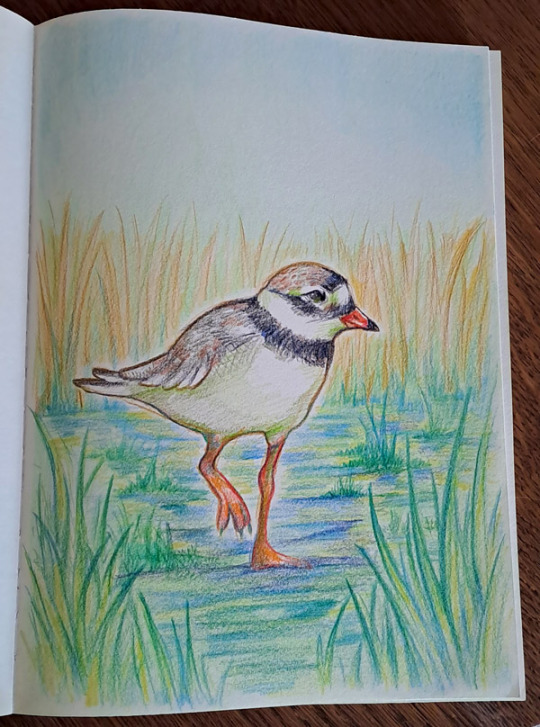
My bird watching hobby has now fully grown into a bird hobby. Drawing birds, thinking about birds... You know, the usual. 🦆
#birds#bohemian waxwing#atlantic puffin#common winged plover#bombycilla garrulus#fratercula arctica#charadrius hiaticula#sketches#my art#traditional art#english bird names are so weird#in finnish these birds are tilhi and lunni and tylli#I also started painting a ruff
32 notes
·
View notes
Text
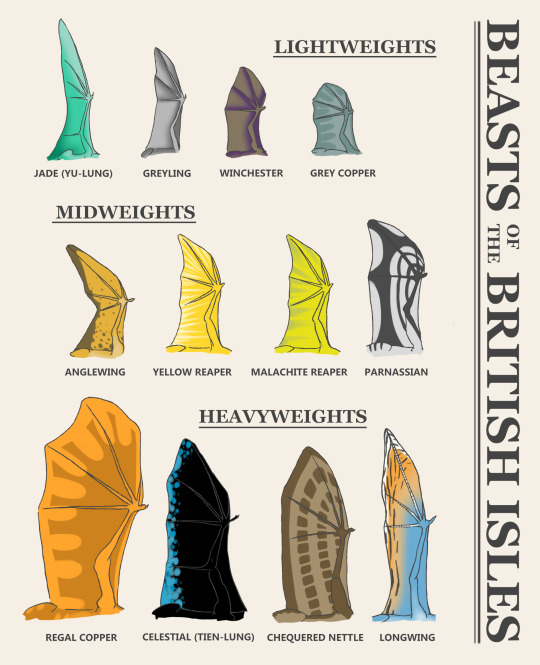
Excerpt from Observations on the Order Draconia in Europe, with Notes on the Oriental Breeds by Edward Howe
As a lifelong birder, I couldn't stop thinking about a comment from an earlier post about the possibility of dragon-spotters in England. So I (naturally) mocked up a page based on my bird field guides to show differences in size, weight and wing shape between the common british dragons. These are all the undersides of wings as they would be seen from the ground. The book title/author is stolen directly from His Majesty's Dragon.
I'm still basing the shape/silhouette/function off of birds, listed below if you were curious:
Jade: Common Swift Greyling: Albatross Winchester: Sparrow Grey Copper: Pheasant Anglewing: Plover Reapers: Duck Parnassian: Crow Regal Copper: Goose Celestial: Fish Hawk Chequered Nettle: Hawk Longwing: Crane
Thanks for reading!
#temeraire#his majesty's dragon#dragons#observations on the order draconia#the lightweights are not completely in scale because i wanted to show detail: they should be a lot smaller :/#i want to draw more fake pages for this book#if you had a dragon field guide what would you want in it?#this also comes from me doing actual studies on bat wings so they're far more accurate than the last ones#also yes i know the longwing is a middleweight but the wing is too long (heh) to fit in that category
163 notes
·
View notes
Text
BOTD: Killdeer

Photo: Andy Reago & Chrissy McClarren
"Widespread, common, and conspicuous, the Killdeer calls its name as it flies over farmland and other open country. Like other members of the plover family, this species is often found at the water's edge, but it also lives in pastures and fields far from water. At times, it nests on gravel roofs or on lawns. Many a person has been fooled by the bird's 'broken-wing' act, in which it flutters along the ground in a show of injury, luring intruders away from its nest."
- Audubon Field Guide
#birds#killdeer#birds of north america#north american birds#plover#plovers#wading birds#waders#shorebirds#birds of the us#birds of canada#birds of mexico#birds of central america#birds of the caribbean#birdblr#birblr#bird watching#bird of the day#Charadrius vociferus
94 notes
·
View notes
Text
Nisegwag

I detected a religious metaphor in this one what with the seven day creation and taming of the seas, so I asked my siblings for suggestions on the most divine shorebird. Sibling was very certain that the puffin is the most god-like bird on the shore🙏 so that's where I started.
The species most common on our coast is the tufted puffin, and while their tufts are soft and hang down behind their heads, I decided to have my nisegwag's tufts curve up to form a halo.
I wanted to make it a little more generically seabird so I also referenced a plover for the legs and a gull for the body and wings.
11 notes
·
View notes
Text
Assorted Pokemon headcanons
Samurott’s helmet-like shell has nerves inside it, so it can feel when someone’s touching it. Most domesticated Samurott enjoy being petted or brushed on the head.
They will also need a scratching post to rub their horn on, since the horn grows constantly. In the wild, they will sharpen the horn against rocks or driftwood.
Male and female Samurott look very similar, but the male has a longer mustache.
Similar to real-life geese and swans, wild Swanna are menaces to society. It’s highly recommended that people do NOT feed or approach them.
Domesticated and trained Swanna are okay around humans, though. However, they do tend to be territorial and will try to bite unfamiliar people.
Their pre-evolution, Ducklett, is a lot more docile, and thus easier to catch.
Deerling are somewhat skittish in the wild, but once they're caught, they quickly warm up to their Trainers. Since they're herd creatures, they require a lot of socializing.
Sawsbuck can be used as a ride Pokemon, but it takes a great deal of training. When riding a Sawsbuck, a Trainer should never use its antlers as hand grips. (Just like you would never pull a horse's mane.)
Like most cat Pokemon, Purrloin and Leopard often get the zoomies, especially at night.
Wild Litwick, Lampent, and Chandelure feed off the life forces of other creatures (both people and Pokemon). However, trained Litwick can be taught to drain the life energy from plants instead. Once its life force is absorbed, the plant will be dried up and perfect for using in tea or as a cooking herb.
Espeon, Sylveon, Umbreon, and Absol are common service Pokemon for people with anxiety disorders or other similar conditions.
Leafeon's leaves have sharp edges, which are used for defense in the wild. However, this does make grooming them difficult for first-time owners. One way to clean your Leafeon without getting cut is to just spray them down with a hose. (In fact, many Grass-type Pokemon enjoy this kind of "bath.")
Flareon is the only Eeveelution that actively avoids water. Instead, Flareon licks itself clean, like a cat.
It is possible for Unfezant to be gynandromorphic, or exhibit both male and female traits. Since their pre-evolutions do not have any visible gender differences, you won't be able to tell if a Pidove or Tranquill has this condition until it's fully evolved.
This condition can manifest itself in quite a few ways:
Stomach feathers are green on one side (male) and orange on the other side (female)
Shorter head plumes
A so-called "female" Unfezant having a crest
One half of the face has head plumes, the other half doesn't.
Not surprisingly, these Pokemon are popular with the LGBT community, along with Eevee and its evolutions.
Female Decidueye are larger than males.
Decidueye use their enormous wings to protect their young, much like a mother hen or plover.
Sometimes they also allow other small Pokemon to take shelter under their wings. They have even been documented doing this with human children as well.
When under threat, a Decidueye will fluff up its feathers and spread its wings to make itself appear larger and scarier, similar to the great horned owl’s threat display.
7 notes
·
View notes
Text
Catbird
by Mary Oliver
He picks his pond, and the soft thicket of his world. He bids his lady come, and she does, flirting with her tail. He begins early, and makes up his song as he goes. He does not enter a house at night, or when it rains. He is not afraid of the wind, though he is cautious. He watches the snake, that stripe of black fire, until it flows away. He watches the hawk with her sharpest shins, aloft in the high tree. He keeps his prayer under his tongue. In his whole life he has never missed the rising of the sun. He dislikes snow. But a few raisins give him the greatest delight. He sits in the forelock of the lilac, or he struts in its shadow. He is neither the rare plover or the brilliant bunting, but as common as the grass. His black cap gives him a jaunty look, for which we humans have learned to tilt our caps, in envy. When he is not singing, he is listening. Neither have I ever seen him with his eyes closed. Though he may be looking at nothing more than a cloud it brings to his mind several dozen new remarks. From one branch to another, or across the path, he dazzles with flight. Since I see him every morning, I have rewarded myself the pleasure of thinking that he knows me. Yet never once has he answered my nod. He seems, in fact, to find in me a kind of humor, I am so vast, uncertain and strange. I am the one who comes and goes, and who knows why. Will I ever understand him? Certainly he will never understand me, or the world I come from. For he will never sing for the kingdom of dollars. For he will never grow pockets in his gray wings.
141 notes
·
View notes
Text



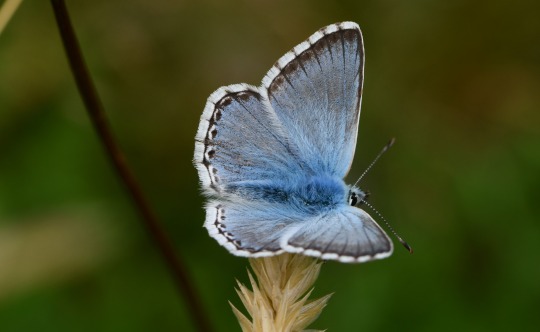
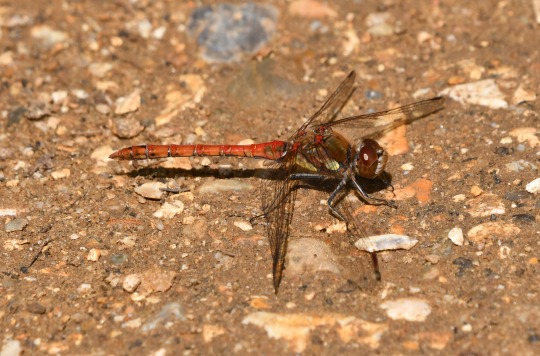
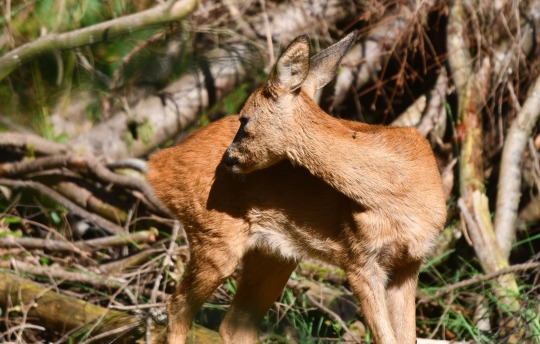
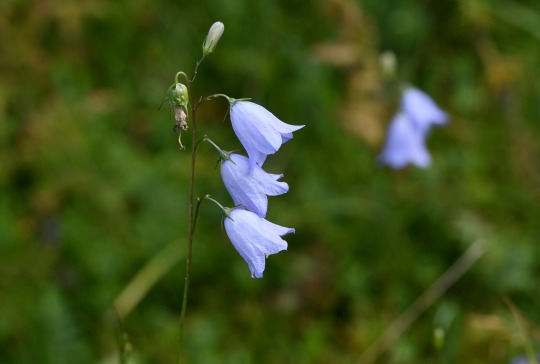

Eight of my favourite photos I took in August 2024 and month summary: Baby steps into the shift of the seasons
The photos are of; view with a moody sky at Lakeside Country Park, young Mute Swans at Keyhaven, Jersey Tiger moth at Lakeside, Chalkhill Blue at Stockbridge Down, Common Darter at Lakeside, Roe Deer at Acres Down, harebells at Shipton Bellinger and King Alfred's cake at Fishlake Meadows.
August is a time to enjoy high summer sights including butterfly filled meadows and darting dragonflies but also a time to prepare for change into an equally exciting wild season, as subtle signs like the drawing in of the nights and emergence of berries hint at the imminent baton exchange of summer and autumn. I have really enjoyed this August to the full for wildlife, walking and photos.
In the early days as the Big Butterfly Count drew to a close I ended triumphantly observing a big increase in species such as Meadow Brown, Common Blue and Speckled Wood being around. There were some stellar additions to my butterfly year this month with Essex Skipper, Silver-spotted Skipper, Chalkhill Blue and Brown Hairstreak seen. Other standout species of a fantastic butterfly month included Brown Argus, Wall Brown, Small Heath, Small White, Brimstone, Comma, Peacock and Red Admiral. I had a marvellous month of moths centring on a phenomenon over a week or so seeing a fair few Jersey Tiger moths at different locations a species I’d only ever seen three times prior to that, a really exciting influx of this resplendent moth. I was captivated by a splendid Swallow-tailed moth at home at the month’s start, with Double-striped Pug, Wavy-barred Sable, my first ever Purple Bar, Grass-veneer, Silver Y, Small Dusty Waves and Six-spot Burnet also enjoyed. As the month went on butterflies rather made way for dragonflies to take centre stage a little, with mesmerising times watching Migrant Hawker, Southern Hawker, evocative of late summer for me Common Darter and Black-tailed Skimmer, with Beautiful Demoiselle and Blue-tailed Damselfly good to see too.
Shift in the year was evident in my birdwatching month too which was another brilliant one with some migration movement. I loved seeing Whinchats at Hook-with-Warsash, Little Stint and Curlew Sandpiper at Pennington and Osprey at Fishlake Meadows. I got some splendid views of the Peregrines at Winchester Cathedral this month, very much enjoyed the new Great Crested Grebe chicks and young Moorhens on regular walks at Lakeside Country Park and was thrilled to see adorable Mute Swan cygnets well a few times at Winnall Moors and Keyhaven in a strong year I’ve had for seeing young birds. Other highlights this month included Ravens, Jay, Red Kite, Buzzard, Marsh Harrier, Kestrel, Sparrowhawk, the last Swifts, Swallow, House Martin, Sand Martin, Stock Doves, Stonechat, Bullfinches, Great Spotted Woodpecker at Lakeside and Green Woodpecker there and heard elsewhere, Chiffchaff, Long-tailed Tit, Blue Tit and Goldfinches including young at home, a few Kingfishers, Cormorants including notably at Lakeside and Winnall Moors, Grey Heron including notably at Lakeside and in Winchester, Little Egret, Great White Egret, Spoonbills, Knot, Grey Plover, Ringed Plover, Avocet, Common Sandpiper, Dunlin, Snipe, Whimbrel, Curlew, Eiders and some Tufted Ducks including ducklings.
Other nice sightings this month included of Roe and Fallow Deers on wonderful afternoon of deers at Acres Down in the New Forest, Grey Squirrel, Common Red Soldier beetle, my first ever Tawny Longhorn beetle at Shipton Bellinger, ladybirds, pondskater with especially lots at one point at Lakeside sticking in my mind, sawflies, charming Hornet mimic hoverfly at Stockbridge Down, Yellow-haired Sunfly, other hoverflies and bees, Ichneumon wasps, Fox and Cinnabar moth caterpillars, crickets/grasshoppers including Roesel’s bush cricket, Long-winged Conehead and Common Field Grasshopper, snails at home on wet nights and gorgeous Ambersnail at Winnall Moors, Common Lizards at Magdalen Hill and Grey Silverfish and spiders at home.
Onto plants and I saw some more thrilling wildflowers this month including fairy flax, water speedwell and another speedwell, St. John’s-worts, fleabane, ragwort, bird’s-foot trefoil, forget-me-not, scarlet pimpernel, water mint, sundew, bog asphodel, hemp agrimony, purple loosestrife, great willowherb, rosebay willowherb, small-flower hairy willowherb, marjoram, wild basil, tufted vetch, vetch, viper’s-bugloss, scabiouses including fine devil’s-bit scabious, wild carrot, upright hedge-parsley, sea aster, scentless mayweed, pineappleweed, dock, self-heal, sainfoin, creeping thistle, spear thistle, woolly thistle, horseweed, common mallow, musk mallow, marsh mallow, golden samphire, nightshade, broad-leaved enchanter’s nightshade and some of my favourites centaury, restharrow, common toadflax, eyebright and endearing nodding harebells. It was amazing to see sunflowers at home in the garden a stalwart of August with the fuchsias and black-eyed Susans coming on nicely too. The aforementioned berries I really enjoyed seeing this month included loads of blackberries and hawthorn, blackthorn sloes, rowan, guelder rose berries, nightshade berries, cuckoo-pint berries, elderberries, wild service tree berries and wayfaring tree berries with apple, acorn and chestnut seen too. There were some nice mushrooms seen this month as well including King Alfred’s cake and panthercap and I took in some stunning views at various locations and habitats with epic sky scenes including moody scenes, the moon and sunsets observed. Have a great September all.
#photography#walking#wildlife#birdwatching#moths#2024#outdoors#butterflies#chalkhill blue#brown hairstreak#fungi#wildflowers#flowers#sunflowers#roe deer#king alfred's cake#common darter#migrant hawker#lakeside country park#mute swan#sky#landscape#cygnets#winnall moors#fishlake meadows#jersey tiger moth#acres down#new forest#hampshire#england
9 notes
·
View notes
Text
THE FULL FUCKED UP BIRD BRACKET
All birds have been randomized, the seeds mean nothing. Yes pitohui is spelled incorrectly in the bracket image.
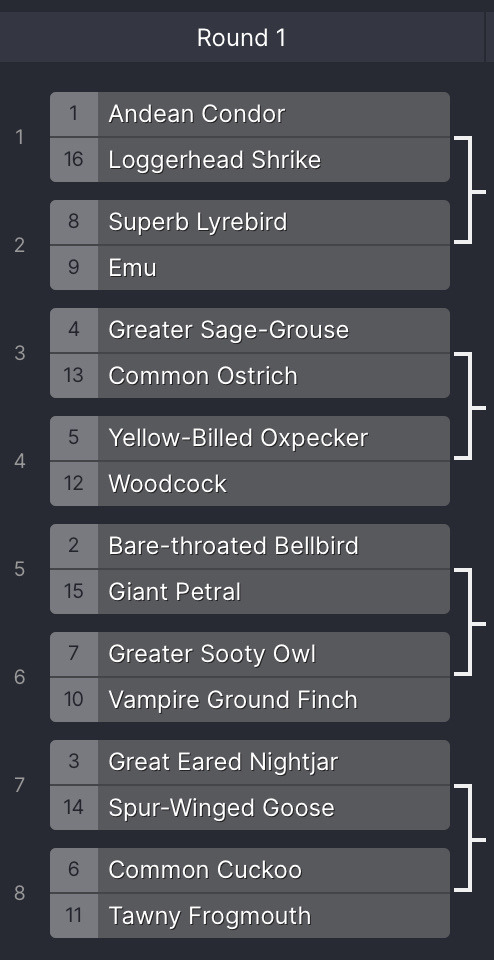
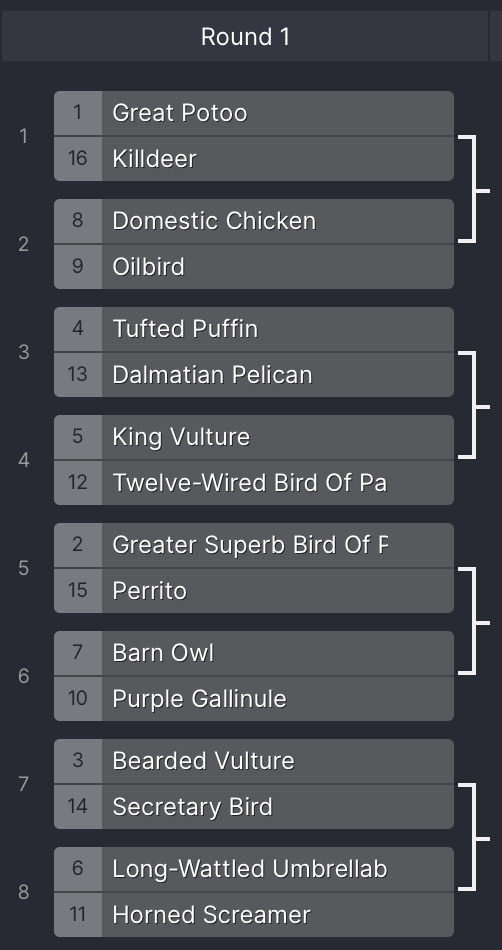

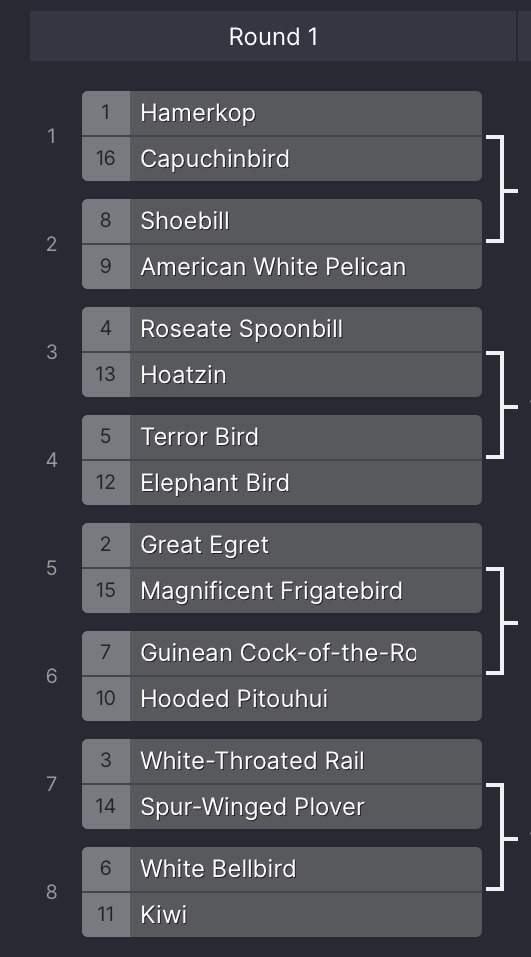
GROUP A
Andean Condor VS Loggerhead Shrike
Superb Lyrebird VS Emu
Greater Sage-Grouse VS Common Ostrich
Yellow-Billed Oxpecker VS American Woodcock
Bare-Throated Bellbird VS Giant Petrel
Greater Sooty Owl VS Vampire Ground Finch
Great Eared Nightjar VS Spur-Winged Goose
Common Cuckoo VS Tawny Frogmouth
GROUP B
Great Potoo VS Killdeer
Domestic Chicken VS Oilbird
Tufted Puffin VS Dalmatian Pelican
King Vulture VS Twelve-Wired Bird Of Paradise
Greater Superb Bird Of Paradise VS Perrito
Barn Owl VS Purple Gallinule
Bearded Vulture VS Secretary Bird
Long Wattled Umbrellabird VS Horned Screamer
GROUP C
Oriental Bay Owl VS Anhinga
Pennant Winged Nightjar VS Snowy Sheathbill
Red-Legged Seriema VS Marabou Stork
Argentavis VS Common Loon
Black Skimmer VS Luzon Bleeding-Heart
Southern Cassowary VS Flamingo (all species)
Green Heron VS Great Hornbill
African Jacana VS California Condor
GROUP D
Hamerkop VS Capuchinbird
Shoebill Stork VS American White Pelican
Roseate Spoonbill VS Hoatzin
Terror Bird VS Elephant Bird
Great Egret VS Magnificent Frigatebird
Guinean Cock-Of-The-Rock VS Hooded Pitohui
White-Throated Rail VS Spur-Winged Plover
White Bellbird VS Kiwi
Polls will be tagged with their BRACKET (example: #bracket a) and #tournament poll
MAY THE WORST BIRD WIN
#information#all of these matchups fucking suck /lovingly#these are literally just all bad bitches being pitted against each other#BRUTAL AS HELLLLLL#mod gf#birdbracket
85 notes
·
View notes
Text
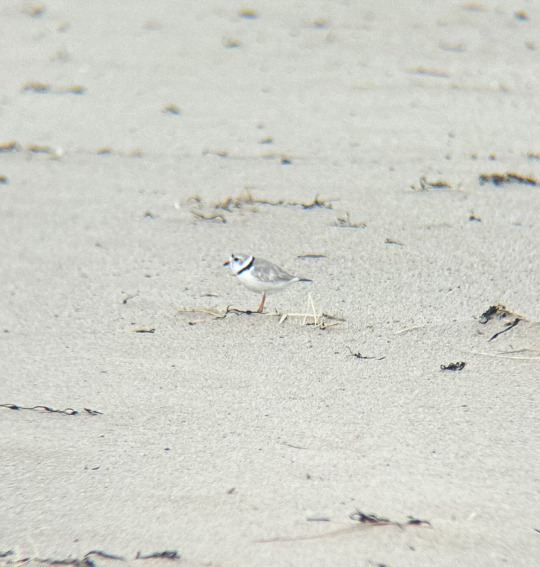
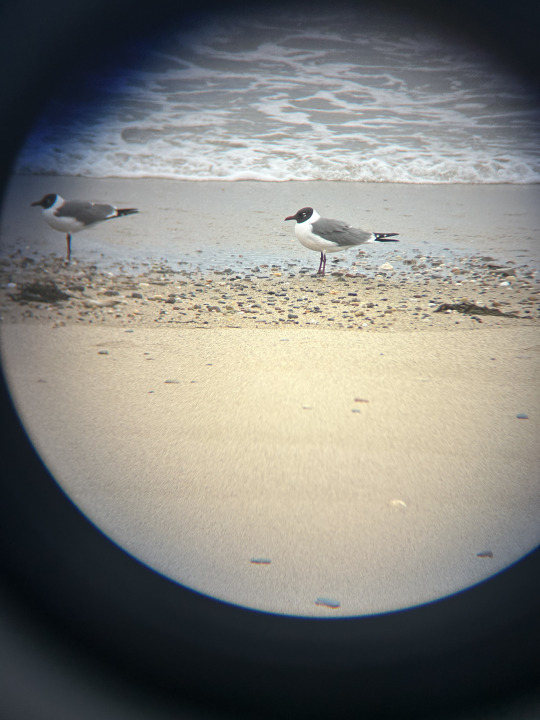
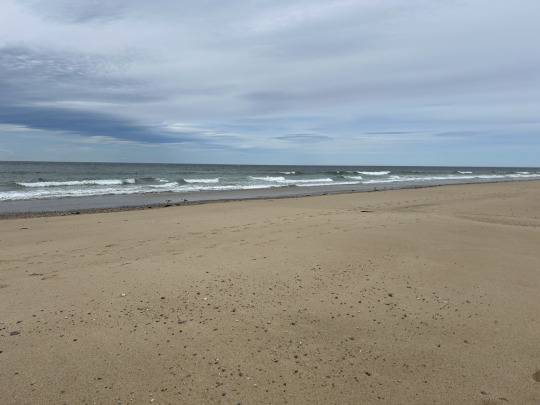
4/14: cape cod?!
we wound our way to the very tippy-top of cape cod , MA in search of seabirds-- and seabirds we found! we spent more than four hours and walked more than four miles total through sand and seawater to find a bunch of cool species, many of which were lifers for me!
Bird 67: a Belted Kingfisher was perched in a marshy area not quite at the seashore.
Bird 68: Surf Scoters were floating out on the water, mixed in with Black and White-winged Scoters!
Bird 69: We spotted a few Piping Plovers running up and down the shoreline-- they were so cute!
Bird 70: Razorbill; these fellas were far off shore and hard to find, but we saw them eventually.
Bird 71: Laughing Gulls were- well, laughing! I think their black heads are very striking.
Bird 72: Ring-billed Gull
Bird 73: Great Black-backed Gull
Bird 74: Glaucous Gull; we saw at least one for certain. I'm awful at identifying my gulls, but I learned that GLGUs are large, chunky, and have all-white wingtips.
Bird 75: Iceland Gull; still not sure how to ID these guys, to be honest...
Bird 76: Pacific Loon; we spent most of our time searching for this bird specifically. The water was full of COLO and RTLO, but seeing as MA is on the Atlantic, PALO are understandably rare. We sorted through winter plumage birds for hours, knowing PALO were present from other birders we came across. We finally ID'd a winter plumage bird based on its narrow beak (relative to a conveniently placed nearby Common) and chinstrap... it was such an exciting moment when we finally got it!
Bird 77: Northern Gannet; there were dozens, if not hundreds, of these guys close to shore. They were gorgeous, bright white with stark black wingtips. I could have watched them gracefully arc in the air before plunging into the water for hours!
Bird 78: Bufflehead; sitting on a lake near the seashore!
7 notes
·
View notes
Text

Beachside Siesta
Most of the laughing gulls (Leucophaeus atricilla) in this group seem to be napping while standing in the low surf. There are a couple nearest the shore that appear to be alert.
Hmmm … I wonder why many birds stick their beaks under a wing while sleeping. Maybe it feels cold … it is an extremity. Maybe they do that like we might cover our hands under our arms in the cold. I'll have to look that up.
"The Laughing Gull is perfectly named; its continuous, raucous "ha-ha-ha" calls are a part of the summer soundtrack along Gulf and Atlantic Coast beaches. This medium-sized, black-hooded gull favors the ocean shore and is a common sight there during the summer, alongside other coastal bird species such as the Royal Tern and Piping Plover. It is less common along inland waterways." - abcbirds.org
@birdcounter
#photo#photography#photographer#photographylovers#birds#birdwatching#LaughingGulls#birdsphotography#birds of north america#birdlovers#birdphotography#birds nature#laughing gull#birbs#bird photography#bird watching#birding#bird
15 notes
·
View notes
Text
TW: Anti-Arab racism

Palestinian Crocodiles
Crocodiles once lived in Palestines Coastal marshlands. (Bentley, n.d.) So what happened?
Palestinian crocodiles are not a distinct species. Palestinian crocodiles were common nile crocodiles or, “Crocodylus niloticus” that lived in northern Palestine. (Bentley, n.d.) They supposedly feasted on crustaceans, migrating birds, frogs, fish, and livestock. (Bentley, n.d.) Spur-winged plovers reportedly picked meat out of the crocodiles open mouths. (Bentley, n.d.) The crocodile eggs were eaten by otters. (Bentley, n.d.) Crocodile blood was feasted on my mosquitoes. (Bentley, n.d.)
A zoo in Jerusalem claims the last Palestinian crocodile was hunted out by Palestinian villagers in Jisar-A-Zarka in 1905. (Bentley, n.d.) Is that the truth though? Some of the villages of the marsh area are Arab Kabbara and Arab al-Ghawarna. (Bentley, n.d.) The people who live here historically lived in caves and tent encampments of the marshlands rocky hills, raising water buffalos, weaving mats with springy reeds, and being well known for their hunting skills. (Bentley, n.d.) They welcomed people fleeing violence or marginalization, and had a significant Sudanese population. (Bentley, n.d.) There seems to be no evidence of a Palestinian tradition of hunting crocodiles. (Bentley, n.d.) Colonial zoologists on the other hand, did hunt, study, and transfer the bodies of crocodiles to collections. (Bentley, n.d.) This was part of a larger 19th century craze of taxidermic decor or study of animals from newly colonized places. (Bentley, n.d.) This combined with European and white American feelings of entitlement to the holy land. (Bentley, n.d.) The local Ghawarna people were seen as capital and used to hunt crocodiles by German-American researcher Gottlieb Schumacher. (Bentley, n.d.) There were stereotypes in Europe and America of crocodiles being evil beasts, and this led to a popularity of European males going on hunting trips for crocodiles. (Bentley, n.d.) Crocodiles became something of a symbol for dangerous uncolonized otherness. (Bentley, n.d.) Crocodiles from Palestine were viewed more favorably for being from the holy land though. (Bentley, n.d.) Eventually the Zor Al-Zarqa/Kabbara marshlands were drained by the British Mandate and Palestinian Jewish Colonization Association in the early 1920s. (Bentley, n.d.) Gawharna people’s labor was exploited, and the legal battle to keep their land was lost. (Bentley, n.d.) Today the area continues to have a colonialist zoological shadow with the Israeli government establishing nature reserves being created that rename the areas to not have Arab names. (Bentley, n.d.)
People like Sami al-Ali, Mohamad Hamdan, and Saidah al-Ali are working to commemorate the past ways of the Palestinian marshlands and imagining a new future. (Bentley, n.d.)
Resources
Bentley, E. (n.d.). Between Extinction and Dispossession A rhetorical historiography of the Last Palestinian Crocodile (1870–1935). Jerusalem Quarterly, 9–29. https://www.palestine-studies.org/sites/default/files/jq-articles/Between%20Extinction%20and%20Dispossession.pdf
#ecocide#israel#Palestine#colonialism#Habitats loss#extinction#crocodiles#anti arabism#indigenous peoples#orientalism#free palestine
2 notes
·
View notes
Text
Birds of Dor-lómin
I have decided to make two posts at least for the birds of Hithlum, this one and one for Mithrim and greater Hithlum
As I take inspiration from several European and Asian countries for the environment of Dor-lómin, the species here reflects that however to the best of my ability it is ecologically consistent. Obviously this will not be a complete list and I will go back to it!
And as always requests are open! I’m also always willing to put together ecological world building based on specific real locations!
Flora, fauna, geography and environment of Arda Masterlist
Note: I use Hadorian here to refer to the folk of Hador and of Marach including cultural practices that might predate Hador himself
The eastern mountains and forests around Húrin’s house: hazel grouse, brambling, northern wryneck, common buzzard, Zitting cisticola, grey headed woodpecker, black redstart, grey heron, common quail, great spotted woodpecker, dusky thrush, white winged crossbill, Bohemian waxwing, ring ouzel, tawny owl, common raven
The western border and Firth of Drengist: horned grebe, osprey, black crowned night heron, little gull, black tern, great white pelican, common kingfisher, common starling, little ringed plover, rocky pipit, white tailed eagle
Note: many of the mountain, sea and wetlands birds here are incidental species occurring in Dor-lómin because of migration or other factors. This is also true of some of the species listed for the eastern mountain borders.
The fields and open lands: Greylag goose, corn bunting, little owl, gadwall, mallard duck, wood lark, bearded reedling, hedge warbler, twite, common grasshopper warbler, yellowhammer, greater scaup (migratory), nightjar, stone curlew, barn owl, black headed bunting, whinchat, little grebe, goldfinch, blue throat
Throughout: common wood pigeon, fieldfare, hobby (migratory), common crane, mute swan, house sparrow, merlin, common buzzard (primarily in the Southern mountains), black woodpecker, gryphfalcon
World building notes:
-The people of Hador keep ducks, geese, chickens and pigeons including a species like passenger pigeons. They are the only group of Atani in Beleriand that has a practice of keeping birds primarily for eggs as well as meat and who uses eggs in cooking semi frequently. The Haladin, Bëorians, Drúedain and other groups do eat eggs though not usually chicken eggs and do not often use them as ingredients in baking (although there are some Bëorian dishes that involve bread with quail eggs)
Aerin and bird HCs
-Hadorian food is a combination of farming and agriculture and hunting and foraging. Grouse, pheasant and wild ducks are sometimes caught for food
-Sea birds are relatively rare but can be seen in western Dor-lómin near the Firth of Drengist and the border to Nevrast. The northern Sindar who live in western Hithlum including western Dor-lómin keep oral records of the presence and appearance of sea birds and mentions of them appear occasionally in song
-Feathers of geese are designs associated with the Hadorian midwinter festival. They are sometimes worn but more commonly embroidered or painted.
-The northern Sindar by the caves of Androth paint birds on the cave and cliff walls, using pigments made from minerals, bark and sometimes shells. Herons, gulls and starling shapes are the most common.
-Random character HC: Sador’s favorite animals to carve are birds especially ground birds. Some of these he even paints or polishes when he has the time.
16 notes
·
View notes
Note
Do yu know what other animals were in ancient egypt? I want my oc to have a unique animal and you seem to know a fair amount

I am a well of ridiculous, hyperspecific, only interesting to some trivia lmao.
I would encourage you not to limit yourself to an entirely unique beast- many deities share sacred animals and are still strong individuals. My mind immediately goes to the huge number of feline deities- lions and lionesses in particular- for an example. Additionally, it's nigh impossible for me (with no academic anthropology/egyptology/historic zoology knowledge) to say for certain that particular animals were present in Kemet when they have no documented deities, mummies, or written mentions. I've had to guess for some, deduce by their present day habitats and more or less "timeline" of their species.
It's also important to keep in mind Kemet had contact with other civilizations in other habitats, meaning they were aware of animals not necessarily native to the area. A perfect example is the Hamadryas baboon- they were Nubian animals, but were sacred to both Thoth and Babi, depicted in art, and many mummies of the species have been recovered. A more surprising example is the Syrian brown bear, which was a rare exotic spectacle for the royal elite. There's also the trouble of many species now being extant from the area, meaning they were there but the local population is now extinct- the African sacred ibis is the example my mind comes to first, the waterfowl no longer present along the Nile.
Coincidentally, I've been compiling a list of animals for my own reference to supply a beast or two for the deities that don't have one in tradition.

Birds
Abdim's Stork
African Darter
African Dwarf Kingfisher
African Grass Owl
African Open-billed Stork
African Pied Wagtail
African Sacred Ibis
Asian Green Bee-Eater
Barbary Falcon
Barbary Partridge
Barn Owl
Barn Swallow
Bearded Vulture
Bennu Heron (likely not an actual animal, the Bennu bird inspired by the Goliath Heron- but felt like including it anyhow)
Black Kite
Black Stork
Black-throated Loon
Black-winged Kite
Brown-necked Raven
Carrion Crow
Cattle Egret
Chukar Partridge
Common Buzzard
Common Cormorant
Common Crane
Common Greenshank
Common House Martin
Common Kestrel
Common Kingfisher
Common Pochard
Common Quail
Common Raven
Common Redshank
Common Redstart
Common Sandpiper
Common Spoonbill
Common Teal
Crab Plover
Crested Plover
Dalmatian Pelican
Demoiselle Crane
Eagle (I'm sure there were some, but I can't find any definitive evidence of species in the ancient Kemetic culture- I would take a guess that the Golden Eage was an infrequent visitor)
Egyptian Plover
Egyptian Vulture
European Roller (considered a pest)
European Turtle-dove
Eurasian Coot
Eurasian Crag Martin
Eurasian Teal
Eurasian Wigeon
Fan-tailed Raven
Ferruginous Duck
Gadwall
Garganey
Glossy Ibis
Golden Oriole
Goliath Heron
Great Bittern
Great Bustard
Great Cormorant
Great Egret
Great Spotted Cuckoo
Great White Pelican
Greater Flamingo (possibly not native)
Green Sandpiper
Grey Heron
Griffon Vulture
Helmeted Guineafowl (not native)
Hermit Ibis
Hobby Falcon
Honey Buzzard
Hooded Crow
Hoopoe
Houbara Bustard
House Crow
House Sparrow (pest, hieroglyph had negative connotation)
Kittliz's Plover
Lanner Falcon
Lappet-faced Vulture
Laughing Dove
Lesser Kestrel
Lesser Pied Kingfisher
Little Bittern
Little Bustard
Little Egret
Little Owl
Long-eared Owl
Long-legged Buzzard
Mallard
Marabou Stork
Marsh Sandpiper
Masked Shrike
Merlin
Mourning Wheatear
Northern Lapwing
Northern Pintail
Northern Shoveler
Ostrich
Pale Crag Martin
Peregrine Falcon
Pied Avocet
Pink-backed Pelican
Purple Gallinule
Purple Heron
Red Kite
Red-backed Shrike
Red-footed Falcon
Red-rumped Wheatear
Reed Cormorant
Ring-necked Dove
Rock Dove
Rook
Ruddy Shelduck
Saddle-bill Stork
Saker Falcon
Sandhill Crane
Sand Martin
Sand Partridge
Short-eared Owl
Spotted Redshank
Sooty Falcon
Squacco Heron
Striated Heron
Swan (not native)
Tawny Owl
Tufted Duck
Western Reef Heron
White-backed Night Heron
White-crowned Wheatear
White Stork
White Wagtail
Wood Sandpiper
Yellow-billed Stork
Mammals
Aardvark (possibly not native)
Aardwolf
Addax Antelope
African Clawless Otter
African Giant Shrew
African Green Monkey (not native)
African Grass Rat
African Leopard
African Striped Weasel
Arabian Oryx
Barbary Deer (not native)
Barbary Lion (now extinct)
Barbary Macaque (not native)
Black Rat
Common Patas Monkey (not native)
Black Rhinoceros
Blanford's Fox
Black Wildebeest
Bubal Hartebeest (now extinct)
Cairo Spiny Mouse
Cape Hare
Caracal
Cheetah
Common Beisa Oryx
Common Genet
Desert Hedgehog
Desert Long-eared Bat
Dorcas Gazelle
Desert Black Cobra
Egyptian Fruit Bat
Egyptian Jackal/African Wolf (originally misidentified, now the African Wolf)
Egyptian Mongoose
Egyptian Pipistrelle
Egyptian Red Fox
Egyptian Slit-faced Bat
Egyptian Tomb Bat
Egyptian Weasel
Egyptian Wild Ass
Fennec Fox
Flower's Shrew
Four-toed Jerboa
Geoffroy's Horseshoe Bat
Gerenuk
Giraffe
Golden Spiny Mouse
Greater Egyptian Jerboa
Greater Mouse-tailed Bat
Greater Red Musk Shrew
Hamadryas Baboon (not native)
Hippopotamus
Honey Badger
House Mouse
Lesser Egyptian Jerboa
Lesser Mouse-tailed Bat
Long-eared Hedgehog
Long-nosed Shrew
North African/Bush Elephant (vilified and driven out by prehistoric Egyptians)
North African Crested Porcupine (not native)
Nubian Ibex (not native)
Olive Baboon (likely not native, sometimes called the Anubis Baboon)
Persian Fallow Deer (not native)
Rhim Gazelle
Rüppell's Fox
Sand Rat
Serval (likely not native, but Ra was depicted as one)
Scimitar Oryx
Soemmerring's Gazelle
Somali Dwarf Shrew
Spotted Hyena
Spotted-necked Otter
Striped Hyena
Syrian Brown Bear (not native)
Wild Boar
White Rhinoceros
Yellow Baboon (not native, species' epithet means 'dog-head' in Greek)
Vervet Monkey
Reptiles
African Chameleon
African Rock Python
Arabian Horned Viper
Desert Horned Viper
Desert Monitor Lizard
Egyptian Cobra
Egyptian Gecko
Egyptian Sand Boa
Egyptian Sand Racer
Egyptian Tortoise
Javelin Sand Boa
Insects/Arachnids/Etc.
Nile Crocodile
Nile Soft-shelled Turtle
Red Spitting Cobra
Saharan Sand Viper
Amphibians
African Common Toad
European Green Toad
Marsh Frog
Mascarene Grass Frog
Nile Delta Toad
Nile Valley Toad
Camel Spider
Banded Garden Spider
Brown Widow Spider
Carpenter Ant
Centipede
Click Beetle
Common Housefly (NOT considered a pest, actually revered as a protector)
Danaid Eggfly
Desert Ant
Desert Locust
Devil's Coach Horse Beetle
Dorippus Tiger Butterfly
Dragonfly
Flea
Fire Ant
Jewel Beetle
Gaudy Commodore Butterfly
Half-edged Wall Jumping Spider
Large Salmon Arab Butterfly
Maggot/Carrion Fly
Migratory Locust
Messor Ant
Millipede
Red-breasted Goose
Mosquito (pest)
Moths in the Saturniidae family
Palestine Yellow Scorpion
Pantropical Jumping Spider
Pharaoh Ant
Plain Tiger Butterfly
Praying Mantis
Scarab Beetle
Sinai Baton Blue Butterfly
Southern White Admiral Butterfly
Scorpions in the Buthidae and Scorpionidae families
Water Scorpion
Fish, Mollusks, etc. (Keep in mind fish were taboo in Kemet)
Abju
African Catfish
African Tigerfish
Bayad Fish
Blacktip Shark
Blue-spotted Stingray
Bolti
Chromis
Cichlid
Cornish Jack
Eel
Flatfish
Gilt-head Bream
Great Barracuda
Leopard Shark
Lepidotus Fish
Loligo Squid
Lungfish
Moon Fish
Mullet
Nile Barb
Nile Bichir
Nile Carp
Nile Mormyrid
Nile Labeo
Nile Perch
Nile Puffer
Parrotfish
Reef Manta Ray
Reef Shark
Sandbar Shark
Sea Snake
Scorpionfish
Spiny Lobster
Sturgeon
Surgeonfish
Swordfish
Thornback Ray
Thresher Shark
Tiger Shark
Tilapia
Triggerfish
Unicorn Fish
Wrasse
Zebra Shark
Domestic Animals
Bean Goose
Brant Goose
Camel (not introduced until Middle/New Kingdom)
Cats (Mau breed)
Chickens (not introduced until New Kingdom era)
Cow/Bull
Dogs (Saluki, Greyhound, Basenji, and Pharaoh Hound breeds)
Donkey
Egyptian Goose
Greater White-fronted Goose
Greylag Goose
Honey Bees
Horse (not introduced until New Kingdom)
Pig
Ram
My sources, if you're interested, are the Wikipedia page for Egyptian wildlife, a few different diving sites about the Mediterranean and Red Sea, a couple books I own on Ancient Egypt that describe the geography of the periods, and this lovely reddit multi-post
Sheep
16 notes
·
View notes
Text
Animals spotted today (from bus ride):
A surprisingly large number of hares
A small herd of deer
Ring-necked pheasants
Pochard ducks
Two kestrels
Highland cows
A BARN OWL, HOLY CRAP!!!
Animals spotted today (around coast or on boat ride):
Many small wading birds (ring-necked plovers, curlews, oystercatchers, dunlins)
Eider ducks in pretty large numbers
Many seagulls (common gulls, herring gulls, kittiwakes, and THE LARGEST GULLS IN THE WORLD, THE GREAT BLACK-BACKED GULL)
A single gannet (but it did its iconic wings-folded dive into the water so still thrilling)
A handful of PUFFINS!!!
Shags (the bird)
Grey seals and their pups
OVERALL, A TREMENDOUS SUCCESS!!!! I WILL TREASURE THESE MEMORIES. I HAD THE TIME OF MY FUCKIN LIFE
12 notes
·
View notes
Text

🔸️Live life with a free spirit, just like a bird.
🔸️Delicately built small plover with bright yellow eyerings. Note dull pinkish legs and large white forehead patch (in adults). Plumage much like bulkier Ringed Plover, but white eyebrow continues unbroken across forehead. In flight shows narrow, indistinct whitish wing stripe. Breeds on stony substrates around lakes, gravel pits, and along rivers; migrants occur in wide variety of fresh and brackish wetland habitats, but rarely out on open tidal areas. Clipped "peu" call quite distinct from call of similar Common Ringed Plover.
.
.
.
.
.
📍Nagi-Nakti Bird Sanctuaries, Jamui
📸Nikon Z6 +Nikkor 200-500mm
.
.
.
.
.
#wildlife #wildlifephotography #wildlifephotographer #wilderness #wildlifeplanet #wildlifeonearth #wildlifephoto #bird #birds #birdsofinstagram #nightjar #nikon #natgeo #natgeowild #natgeoindia #natgeoyourshot #yourshotphotographer #earthcapture #earthfocus #earthinfocus #earthofficial #natureinfocus #nofilter #bbcearth #BBCWildlifePOTD #nikondz6 #nikonindia
0 notes
Text
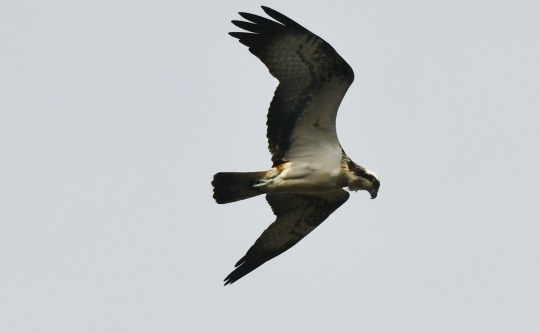
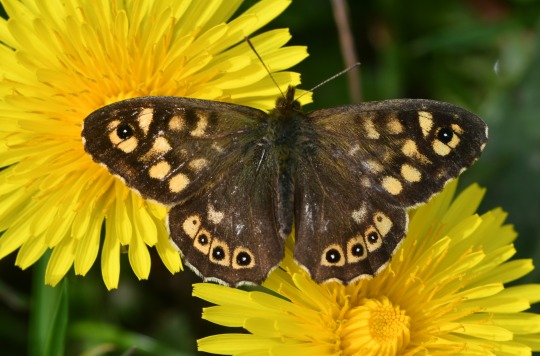

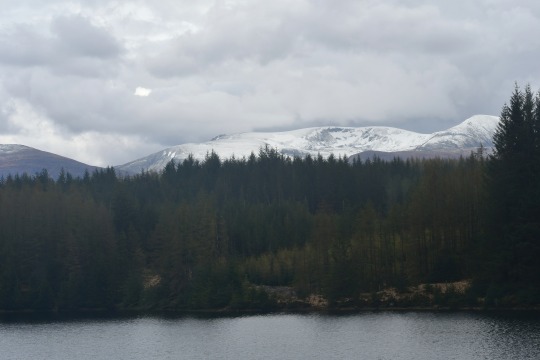
Four of my favourite photos I took in April 2024 and month summary
The photos are of; an Osprey at Lossiemouth in Moray, Speckled Wood on dandelions by Lakeside Country Park in Hampshire, early spider orchid at Durlston in Dorset and view at Laggan Dam.
April was another momentous and splendid wild month for me with so much seen and many amazing places visited. My birdwatching year continued to go from strength to strength with some smashing spring species seen and my year list kept pace with where my others had been at this stage in a year being second only to the number I was on last year my highest ever year list. Spring delights Swallow, House Martin, Wheatear, Whitethroat, glorious Sedge Warbler, Redstart, thrilling views of Guillemot and Fulmar, Little Tern and Common Tern were key species added to my year list this month alongside blockbuster names Osprey and rare Marsh Sandpiper. Avocet, Marsh Harrier, Buzzard, Sand Martin, Goldcrest, Blackcap seen and heard and my first Cuckoos heard this year were other highlights. Following the Lakeside Great Crested Grebes with their four growing chicks and a pair still courting and the new Winchester Peregrine pair was special again this month, as was seeing Greylag goslings and adorable Moorhen chicks at Lakeside. The month ended and the new one began whilst away on the incredible adventure that has been our Scotland holiday; it has been pure, tranquil, joyful and nourishing being out in wilderness areas surrounded and embraced by sensational wildlife both at the amazing cottage we’re staying in and the many fantastic places visited. By the end of April we had already seen many of the standout species of the trip including resplendent summer plumage Black-throated Diver and Red-throated Diver, majestic White-tailed Eagle, exuberant Willow Warblers a very welcome constant, Pink-footed Geese, Red Grouse, Red-legged Partridge, loads of Common Sandpipers, Little Ringed Plover, Knot, Hooded Crow, Kittiwake, amazing views of many Ospreys, Razorbill, Puffin, Common Scoter, Goosander, Goldeneye, Long-tailed Duck, Teal, Wheater, Sand Martin, Yellowhammer, Crossbill, Brambling, White Wagtail, Tree Sparrow, Raven, Skylark, Buzzard, Common Gull, Curlew, Lapwing and Oystercatcher.
It was a massive butterfly month for me too as the peak season moved through the early gears enjoying magical views of Red Admiral, Peacock, Brimstone, Speckled Wood, Small Tortoiseshell, Small White, Orange Tip, Green-veined White, Holly Blue and Wall Brown with many making the most of the wealth of dandelions out the front and at Lakeside. My moth year got going too with White-shouldered House moth at home and bright Brimstone moth at Durlston.
It was a marvellous month of mammals with Hedgehog at home, more Roe Deers in a strong year I’m having for them, Sika Deers on the way to Durlston and Grey Squirrels enjoyed. A massive part of the Scotland trip was exhilarating encounters with mammals, getting some of my best ever views of certain species; inside April this included stunning intimate views of Hares and Roe Deers around the cottage, an amazing moment as a Stoat ran through the garden, a dream encounter watching Bottlenose Dolphins at Spey Bay and Mountain Goats. Bees, spiders, Black and Yellow Cellar slugs and pill woodlouse were other highlights this moth.
Flowers gripped my month of course too as the season really matured with cuckooflower, garlic mustard, wild garlic, early purple orchid, my first ever known sighting of green-winged orchid, early spider orchid, cowslips, bluebells, greater stitchwort, marsh marigold, wood anemone, milkwort, buttercups, lesser celandine, wood anemone, cuckoo-pint, red deadnettle, white deadnettle, yellow archangel, forget-me-not, green alkanet, speedwell and herb-Robert starring alongside the breathtaking dandelion scenes. Vetch, sea and red campion, thrift, hogweed and oxeye daisy (some more than others and largely down to personal perspective) were examples of the cycle of the floral year being slightly ahead again. In Scotland it was interesting to observe spring being slightly behind compared to home with daffodils and primroses still around in numbers among others. It was nice to enjoy the sight of fungi here and there in April including hoof fungus in Scotland.
I enjoyed two great social occasions this month, the Hampshire Ornithological Society’s Member’s Day and a talk from Megan McCubbin based around her book which I thoroughly enjoyed reading earlier in the year. Both were inspirational and eye-opening times where it was great to meet like-minded people something watching the Great Crested Grebes has allowed a lot too. Finally I enjoyed being out and looking out so much in April taking in my surroundings and taking in some wonderful vistas and epic sky scenes. Immersed in the splendour of the vast, open, rugged, mountainous and varied landscape in Scotland also including wetland, coast and forest we enjoyed some incredible and breathtaking views.
#early spider orchid#durlston#dorset#laggan dam#scotland#england#osprey#speckled wood#dandelions#flowers#birdwatching#birding#bird#butterfly#birds#butterflies#great crested grebe#white-tailed eagle#red admiral#2024#april#wildlife#photography#marsh marigold#nature#reflections#europe
13 notes
·
View notes